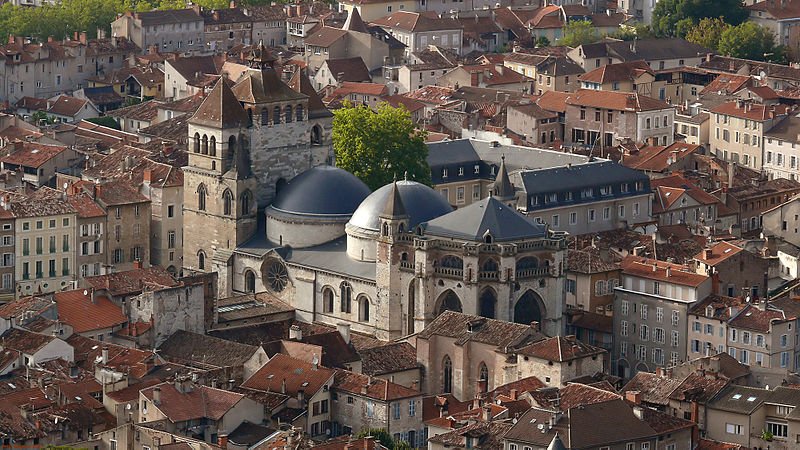 Cathedral Saint-Étienne in Cahors is just one of many sites on the Routes of Santiago de Compostela
Cathedral Saint-Étienne in Cahors is just one of many sites on the Routes of Santiago de CompostelaSource: https://commons.wikimedia.org/wiki/File:Cahors_GUG_04_.jpg
Author: Peter Gugerell

Routes of Santiago de Compostela are pilgrimage routes that were taken by thousands of pious pilgrims throughout the Middle Ages France. There are all together four different routes. They were taken by Spanish pilgrims. These routes pass through France.
Today there are many historic monuments along the routes of Santiago de Compostela. They stand as a historic reminder of the key role played by the routes in religious and cultural exchange during the late Middle Ages.
All along the routes were specially built edifices. They were erected specially to serve the needs of the pilgrims traveling along the routes. Together, these ruins and monuments serve as a witness of the influence of Christianity on the people of Europe in the Middle Ages.
Routes of Santiago de Compostela was inscribed as a World Heritage Site during the 22nd session of the World Heritage Committee held in Kyoto, Japan, on 30 November to 5 December, 1998.
World Heritage Site Inscription Details
Location: Regions of Aquitaine, Auvergne, Basse-Normandie, Bourgogne, Centre, Champagne-Ardenne, Ile-de-France, Languedoc-Roussillon, Limousin, Midi-Pyrénées, Picardie, Poitou-Charentes, and Provence-Alpes-Côte d'AzurInscription Year: 1998
Type of Site: Cultural
Inscription Criteria: II, IV, VI
 Latest updates on Penang Travel Tips
Latest updates on Penang Travel Tips

Copyright © 2003-2025 Timothy Tye. All Rights Reserved.

 Go Back
Go Back